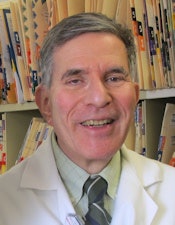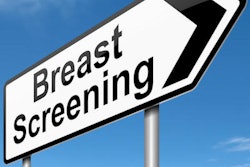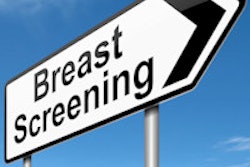As debate swirls around screening mammography, the term "personalized screening" has surfaced to describe what proponents say is screening tailored to a woman's particular risk. But in reality personalized screening equates to healthcare rationing, according to a new opinion piece in the American Journal of Roentgenology.
In a commentary published online September 8 in AJR, Dr. Stephen Feig explains his belief that the term "personalized screening" is dangerously misleading. AuntMinnie.com discussed the subject with Feig, who is a professor at the University of California, Irvine.
 Dr. Stephen Feig from the University of California, Irvine.
Dr. Stephen Feig from the University of California, Irvine.AuntMinnie: What does the term "personalized screening" actually mean in the context of mammography? And what does "risk-based screening" mean?
Feig: If you talk to epidemiologists and healthcare managers, the term personalized screening actually translates to restricted screening -- that is, less screening for women they think are at decreased risk. It's a euphemism for healthcare rationing. They're trying to spin it as tailored healthcare, designed for the individual woman, but the thing is, we don't actually have the capability to design screening for lower-risk women, which is why they should be screened according to the American Cancer Society's recommendation: annually starting at age 40 and continuing for as long as the woman is in good health.
For radiologists, personalized screening tends to mean risk-based screening -- that is, women who are at higher risk of breast cancer get additional screening beyond the basic American Cancer Society recommendation. So for women with a lifetime risk of 20% to 25% or higher, or genetic mutations, or a first-degree family member who had breast cancer, additional screening with breast MR is recommended. And for women with dense tissue, ultrasound is an option, although they should know that the false-positive rates may be high.
What are the potential consequences of applying this personalized screening framework?
It's dangerous to tell women they're at low risk based on family history or even risk assessment models like Gail, possibly reducing their screening frequency. Studies have found that not screening supposedly lower-risk women -- that is, those without a family history of the disease or dense tissue -- would miss 80% of breast cancers.
For example, Dr. Stamatia Destounis at Elizabeth Wende Breast Care discovered that among women 40 to 49 years old with breast cancer found at screening, 61% had no family history of the disease. And researchers at Cornell Medical Center found that only 8% of women in this age group in whom breast cancer was detected at screening had a first-degree relative with the disease.
Some of the suggestions for personalized screening are even worse. For example, Schousboe et al in the Annals of Internal Medicine [July 2011, Vol. 155:1, pp.10-20] advocate not screening women 40 to 49 who do not have a family history of breast cancer and not screening women 50 to 79 more frequently than every three or four years, except for those with dense tissue category 3 and 4.
Why is this idea being championed?
Well, people can sense where the political wind is blowing. The government is trying to control healthcare costs and reallocate resources.
Personalized screening advocates talk about the harms of screening mammography, such as false positives and unnecessary biopsies -- and the anxiety women feel about them. We certainly could eliminate false positives by eliminating screening altogether. But really, this anxiety is transient, and less than would be caused by a diagnosis of a breast cancer that had metastasized.
The concept also fits with the U.S. Preventive Services Task Force (USPSTF) screening recommendations. But research has shown that, if followed, USPSTF's guidelines would miss many cancers as well. Drs. Hendrick and Helvie wrote in AJR [February 2011, Vol. 196:2, pp. W112-W116] that if women followed American College of Radiology guidelines instead of USPSTF's, 71% more lives would be saved -- and they did this using a risk model developed by the National Cancer Institute that was made available to USPSTF.
What would you say to proponents of personalized screening?
Basically, there's no free lunch. If you cut back on screening, you'll reduce the number of lives saved -- it's that simple.



















